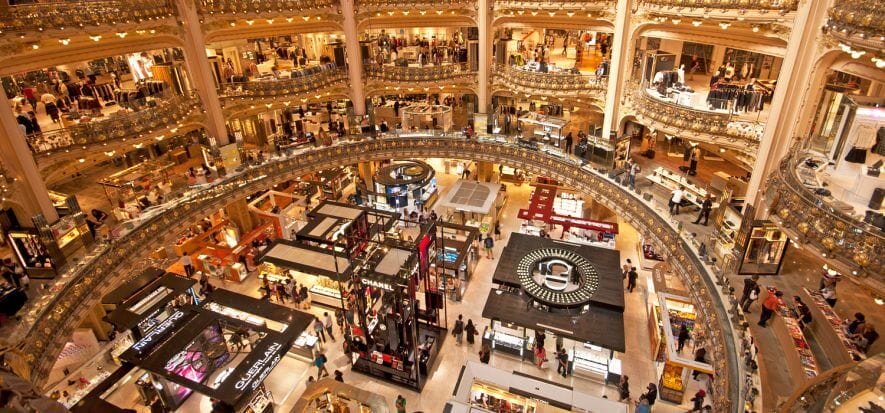The weight of sneakers. The difficulties in offering the right offer mix of leather goods. Sustainability no longer interests young people (as much) at the moment of purchase. These are the three main aspects that emerge from the study on the world of fashion malls conducted by IADS (International Association of Department Store) in collaboration with consulting firm NellyRodi. The quota of revenue from leather goods on the total turnover of malls associated to IADS went from 10% in 2019 to 8% in 2021, showing a countertrend compared to the generalized one for the segment. Luxury and accessible luxury (36%) and medium-end products (33%) are the highest selling categories. Within the footwear segment, in the same period, the quota of sport shoes (sneaker, running, tennis) has remained stable at 6%.
The trend for accessories in department stores
The challenge for department stores is attracting local customers, specifically younger generations. To do so, they need to create the right mix of niche and well-known brands that generate high volumes of sales. According to IADS, this challenge is specifically complex for the leather goods segment, where the weight of consolidated and global brands is important. While online sales have tripled from 2019 to 2021 (from 2% to 6% of the category’s activities, says IADS), they haven’t been able to compensate the missing revenue caused by a lack of foreign clients. Thus, accurately choosing which niche brands to have, becomes fundamental. “Another option is to collaborate directly with brands to present exclusive products”, reads a study cited by Fashion Network.
The weight of sneakers
On the footwear front, sneakers continue to represent safety even during these pandemic years. Sales are stable, with a slight increase in 2020. So, beside the well-known brands, department stores also offer more trendy brands, and, at the same time, they try to “collaborate directly with third-party retailers of high-end and collection products”, says IADS.
Sustainability
Within the context of sustainability and new generation, IADS specifies that, for leather goods and shoes, sustainability isn’t a topic that attracts young generations. In fact, the demand for sustainable products is still low and mainly comes from people of between 25 and 34 years of age.
In photo from Shutterstock, Galeries Lafayette in Parigi (associate of IADS)
Read also:










